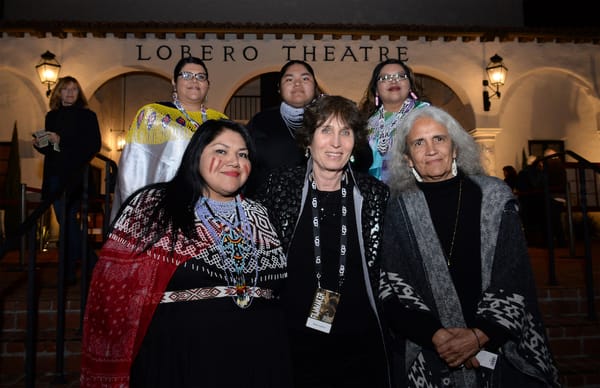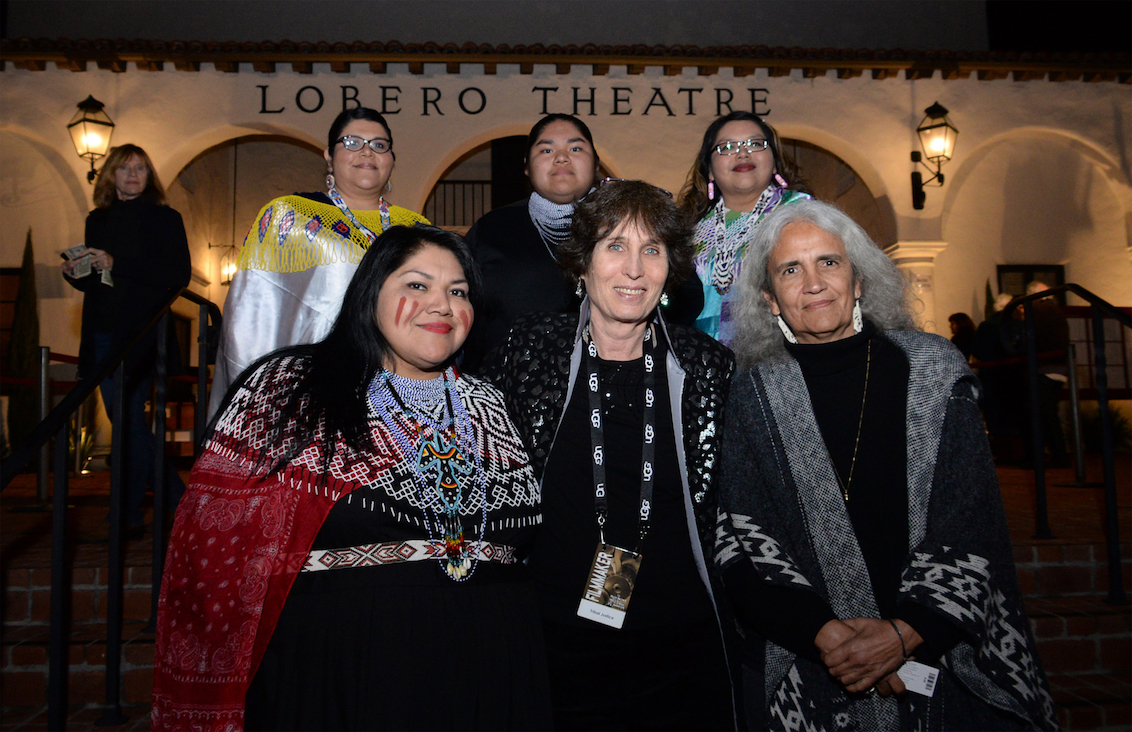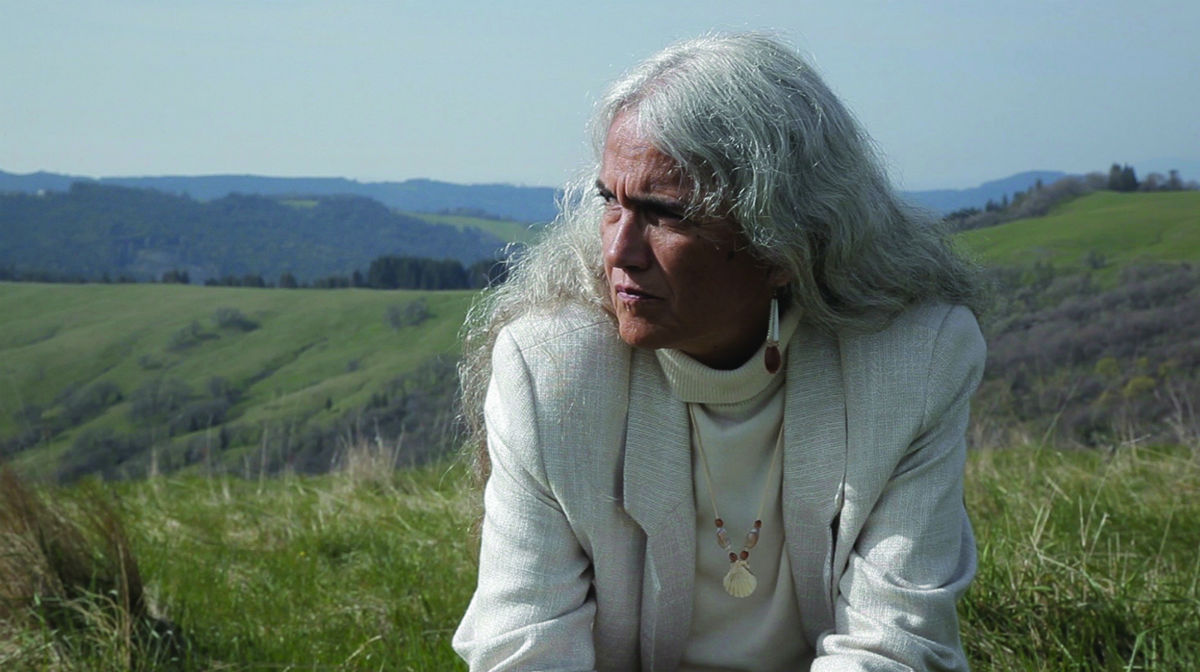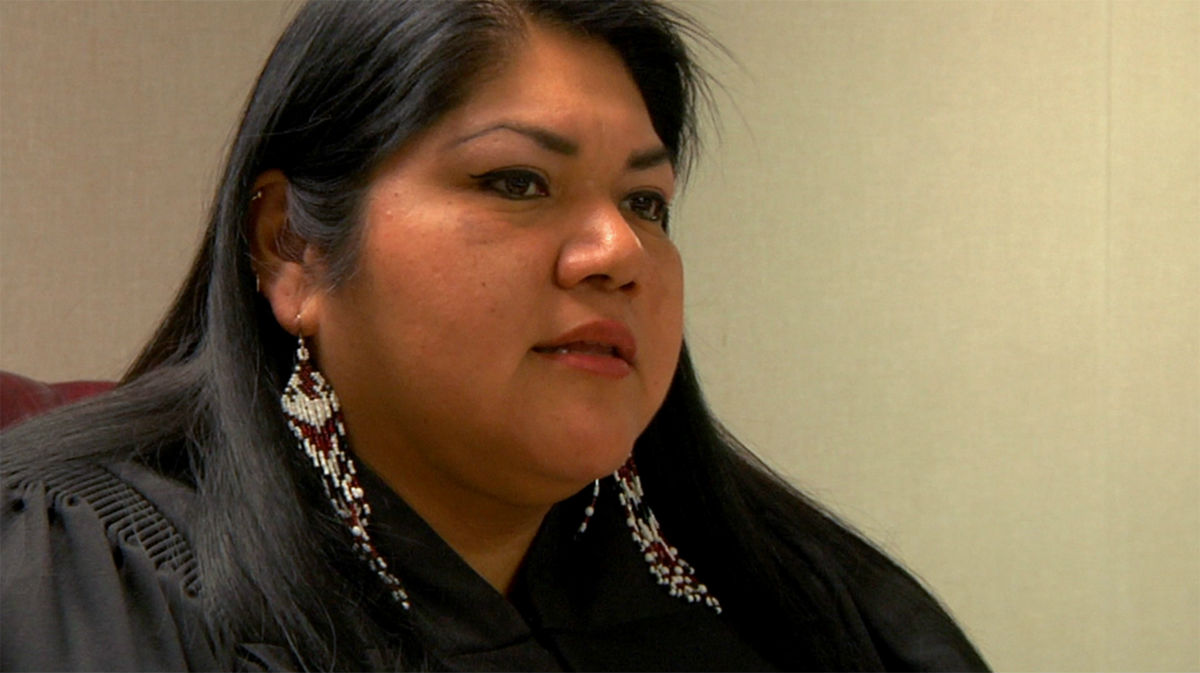Of Two Spirits: "Tribal Justice" Presents a Different Kind of Law
The documentary follows two Native American judges and their goal — restoring justice.

The documentary follows two Native American judges and their goal — restoring justice.

Front row: Judge Claudette White, filmmaker Anne Makepeace and Judge Abby Abinanti outside Santa Barbara's Lobero Theater just before the premiere.
A trip to court is not usually a good day for anyone. The high, high desk, a judge robed in black, a galley for the audience below, armed sheriffs; it can be terrifying to even dispute a parking ticket in the U.S. court system.
“Even if you aren’t a criminal, you start to feel like one in that setup,” says filmmaker Anne Makepeace, who lives in Lakeville, Conn.
During the last three years, Makepeace has seen her fair share of court rooms while filming her latest documentary, Tribal Justice, which was aired on PBS’s POV, and is now on a screening tour of North America. The documentary will be shown at Marist College on Wednesday, Nov. 28 at 6 p.m. Judge Albert Rosenblatt, former justice on the New York Court of Appeals, will join Makepeace for a post-screening Q and A session. The panel will be moderated by Annamaria Maciocia, a senior professional lecturer at Marist, as well as the director of the Marist Pre-Law program.
The film takes a look at the wellness and restorative courts (yes, you read that correctly) of the Honorable Abby Abinanti, Chief Judge of the Yurok Tribe (and the first Native American woman to pass the California bar exam) on the north coast of California, and the Honorable Claudette White, Chief Judge for the Quechan Tribal Court in Yuma, Arizona. Both judges work closely with tribal families, state court judges, probation officers and social workers to ensure the best outcomes for those who have found themselves in the tribal court system. The judges, who are often in plain clothes, preside over case after case of fellow tribe members — particularly young men — who have lost their way and need a plan and community support in order to get back on track.
The documentary follows the story strands of three of these young men: Dru, a nine-year-old boy with developmental disabilities; Taos, a young father and former meth addict fresh out of San Quentin prison; and Isaac, Judge White’s own nephew who is facing two felony charges before even turning 18, as they straddle life, rehabilitation and involvement in the state court systems.

“It was a process of discovery for me,” says Makepeace. “There is a whole different judicial system in our country. Other states are starting to pay attention to what tribal courts do. And they're asking, ‘How can we use a model that isn’t about punishment so much as it is about healing?’”
According to Makepeace, the film is making waves not only on the festival circuit, where it has garnered several Best Documentary awards, but also in the state courts, countless law schools, libraries, colleges and legal conferences across the country.
“It’s inspiring a conversation,” she says.
The concept of restorative justice is not unknown to state court systems. The idea emerged, alongside the victim’s rights movement, during the early 1970s as a potential alternative approach to the court process. And not coincidentally, the practices and principles of restorative justice hark back to Indigenous cultures, where restitution and community involvement work in tandem to “make whole again” the victim and the perpetrator. And the community. The stark contrast between the two practices — restorative justice and by-the-book sentencing — is illustrated throughout Tribal Justice.
“The tribal courts always felt very personal. Abby sits at a table with the people who are sent to her,” says Makepeace. “But in the state courts, there were stacks of folders piled three-feet high, and it felt like the judges were reading from a script. And the accused would show up in shackles. It is jarring.”
The two tribal court judges, Abinanti and White, work tirelessly to make sure that the young men, and their families, have all of the resources necessary — that includes mandatory time spent with tribal elders — to ensure a successful return to a healthy life, free of drugs, crime and pain. Judge Abinanti’s Wellness Court program is punctuated with a poignant graduation ceremony, where the judge herself serves food to the families and embraces them with words of wisdom and encouragement. And it becomes clear that, like many viewers, Makepeace, too, is in awe.
“Claudette, I was so impressed with her, her passion for a more humane kind of justice,” says Makepeace. “And Abby is so fierce, so beautiful, and honestly so successful.”
It is nearly impossible, while watching Tribal Justice, to not become wholly invested in the lives of the judges and of the people they are trying to help. Their successes are soaring, and their missteps are wrenching. For Makepeace, that’s the whole point. That’s always been the point in her long career.
“There were a lot of times when I felt like I didn’t have a film here. It had to be a human story, not just a bunch of statistics,” she says. “But I saw their stories start to emerge. And I was smitten. I think I have to fall in love. Really fall. Then the film takes shape.”
Screening of Tribal Justice, followed by a Q&A session with filmmaker Anne Makepeace & Judge Albert Rosenblatt
Wednesday, Nov. 28 at 6 p.m.
Free
Marist College, Poughkeepsie, NY


